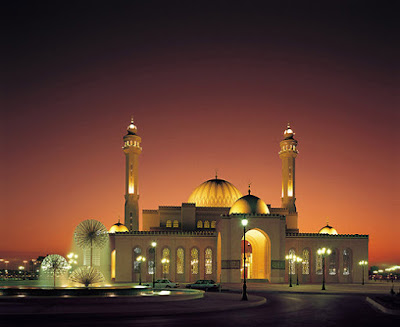The Sultan Ahmed Mosque (Turkey Istanbul)
. The Sultan Ahmed Mosque (Turkey
Istanbul)
The Sultan Ahmed Mosque is an
historical mosque in Istanbul. The mosque is popularly known as the Blue Mosque
for the blue tiles adorning the walls of its interior. It was built from 1609
to 1616. Like many other mosques. While still used as a mosque, the Sultan
Ahmed Mosque has also become a popular tourist attraction. The design of the
Sultan Ahmed Mosque is the culmination of two centuries of both Ottoman mosque
and Byzantine church development. It incorporates some Byzantine elements of
the neighboring Hagia Sophia with traditional Islamic architecture and is
considered to be the last great mosque of the classical period. The six
minarets were a matter of contention and a first, since four minarets were the
common maximum. Only after one more minaret was added to the Masjid al-Haram,
Grand Mosque, in Mecca was the six minarets issue settled. Their colors have
faded and changed (red turning into brown and green into blue, mottled whites)
and the glazes have dulled. The tiles on the back balcony wall are recycled
tiles from the harem in the Topkap Palace, when it was damaged by fire in 1574.
A heavy iron chain hangs in the upper
part of the court entrance on the western side. Only the sultan was allowed to
enter the court of the mosque on horseback. The chain was put there, so that
the sultan had to lower his head every time he entered the court in order not
to get hit. This was done as a symbolic gesture, to ensure the humility of the
ruler in the face of the divine.

